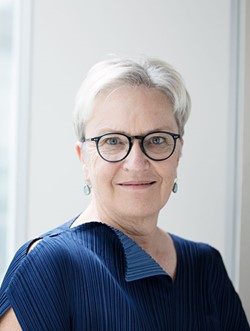Prof Wilsher, from Auckland City Hospital and The University of Auckland, sat down with the PACT team to talk about her career in PF, including how it started, her research interests and how she’s dealt with challenges along the way.

Tell us a bit about yourself and why you chose PF as your research area:
When I was a respiratory registrar I was privileged to hear Professor Margaret Turner-Warwick give a lecture on interstitial lung disease. She was an inspiration from that first meeting and I was lucky enough to secure a post fellowship training post in her research laboratory at the National Heart and Lung institute, courtesy of my then supervisor having been at Oxford with her.
Lesson 1: mentors can help progress a career from an early stage. Leverage off contacts.
Describe your clinical research focus in a couple of sentences:
Since moving to London I have continued my clinical and research interest in ILD, particularly structure function relationships. Margaret T-W was an early adopter of CT imaging and reconciled biopsies and CT findings in patients with scleroderma lung disease in her collaboration with Professor Carol Black. Athol Wells, my registrar colleague back In New Zealand later brought all this information together in his sentinel publications on HRCT patterns in various ILDs, hitherto lumped together under the umbrella name of cryptogenic fibrosing alveolitis.
Lesson 2: work for the best people you possibly can – they will inspire and teach you so much.
My international laboratory experience, under the supervision of Professor Pat Haslam resulted in life-long friends and many future collaborators who formed my career long international network.
Lesson 3: build a network early in your career – it will last.
Tell us how this became your clinical research focus:
Whilst at the NHLI I was able to undertake clinics and procedural sessions at the Royal Brompton Hospital as well as learn the basics of laboratory science. I came back to NZ and continued bench research for a few years but found that very challenging with the university laboratory at a different site and a busy clinical practice so left the bench and moved to observational clinical research. My ILD cohort at that time was dominated by patients with sarcoidosis so that became an interest before moving to work collaboratively with bioengineers in the University of Auckland, in partnership with radiologist Dr David Milne.
Lesson 4: collaborate!
What have you seen achieved in this particular area of research over your career?
I have a very modest research pedigree as a personal researcher but my leadership roles in research both at a District Health Board and national level have probably contributed more. I have been fortunate to help shape the NZ Health Research Strategy and then oversee its roll out, whilst remaining accountable for Auckland City Hospital’s research portfolio and the relationship with academic partners.
Lesson 5: there are many ways to support research and to enjoy participation in such an interesting and stimulating vocation.
What has been the biggest challenges of your clinical research career?
Time! With a busy clinical and leadership career, three children and one dog – something has to give. In New Zealand we do not have large cohorts of ILD patients so I would have had to have moved to another jurisdiction to secure the research base required for a more comprehensive research career. That was a choice made early in my career when I turned down jobs to return home to NZ – it is quite a nice place to live, never more so than now.
Lesson 6: Prioritise, you cannot do everything!
Tell us a bit about the people who you have worked with in clinical research:
I have worked for and with many wonderful scientists and clinician researchers including those already mentioned and now my colleagues across Australia and New Zealand who share an interest in ILD, and who demonstrate collaboration in the friendliest sense. I am indebted to the generosity of our patients who have given time and energy to participate in our studies knowing that they are unlikely to benefit themselves from whatever findings emerge. Seeing new researchers evolve into independent grant writing and project delivering scientists is very rewarding. Getting a thesis over the line after all that editing and proof reading!
Lesson 7: pay it back – be a mentor and teacher.
What do you see as the biggest evidence gaps in PF care? What are the clinical research priorities?
Understanding the mechanisms of inter-subject disease variation remains a challenge and new therapeutics are desperately needed but finding out what makes the most difference to patients’ lives is very important and that might not be a cure, but something that improves quality of life such as relief of difficult symptoms e.g. cough.
Lesson 8: let patients and communities help determine our research activities – co-create and co-design.
